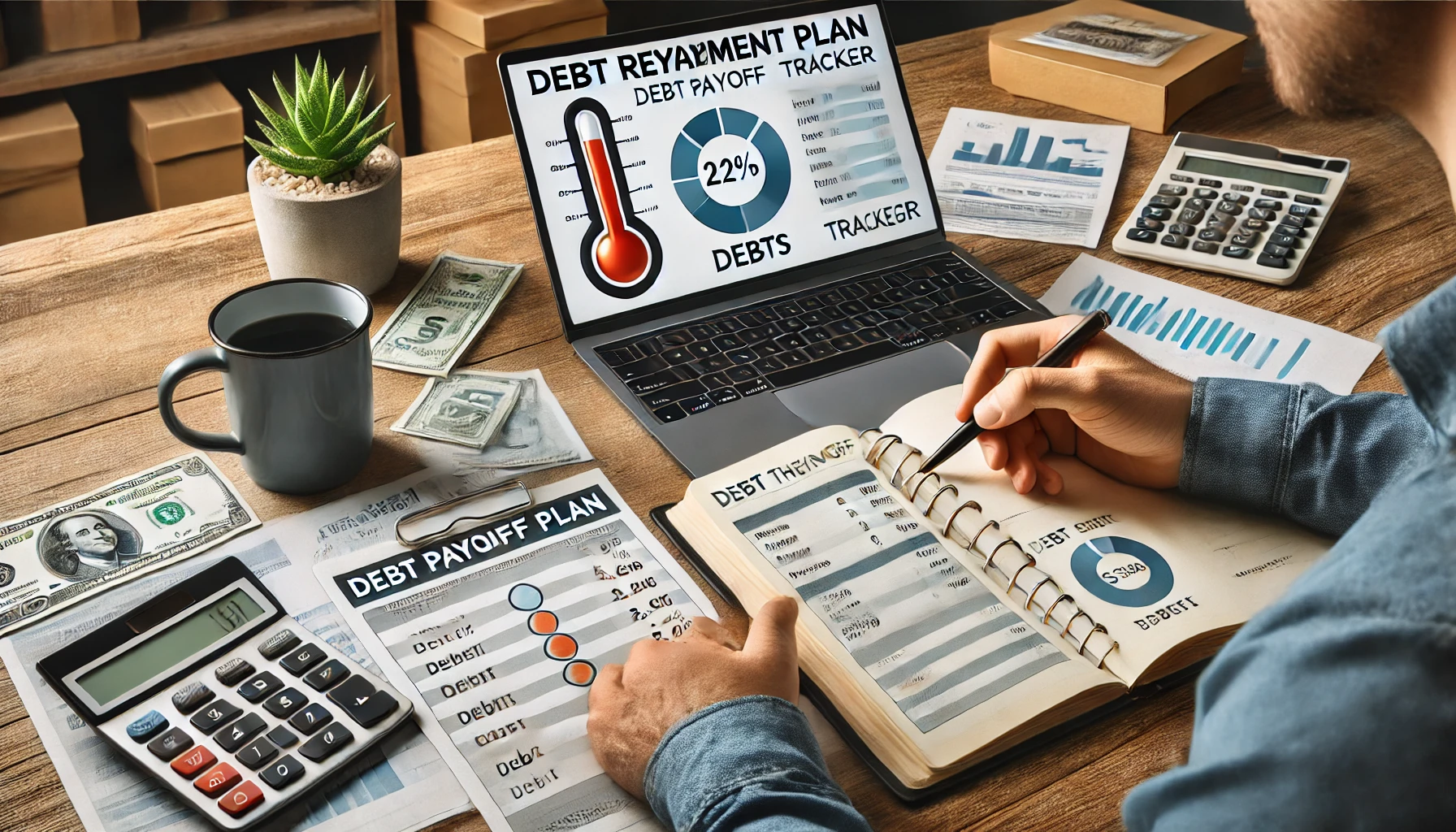Debt can feel like a heavy weight. Whether it’s credit cards, personal loans, student loans, or medical bills—it adds stress, limits your options, and slows your progress toward your goals.
But here’s the good news: with a clear strategy and consistent action, you can get out of debt—and stay out.
In this article, you’ll learn how to build a debt repayment plan that fits your life, motivates you, and actually works.
Step 1: Know What You Owe
Before you make a plan, you need a full picture.
Make a list of:
- Lender names
- Total balance
- Minimum payment
- Interest rate
- Due date
Seeing it all in one place turns fear into clarity.
Use a spreadsheet, app, or notebook—whatever helps you stay organized.
Step 2: Choose Your Payoff Strategy
There are two main methods to attack debt:
🟢 Snowball Method
- Pay off the smallest balance first
- Get quick wins and build momentum
🔵 Avalanche Method
- Pay off the highest interest rate first
- Save the most money over time
Pick the method that fits your personality. Snowball builds confidence. Avalanche saves money.
There’s no wrong choice—just start.
Step 3: Budget for Extra Payments
Minimum payments alone won’t get you out of debt quickly.
How to find extra money:
- Cut small non-essential expenses (subscriptions, takeout, impulse buys)
- Pause savings temporarily if needed
- Use windfalls (tax refunds, bonuses) to make lump-sum payments
Every extra dollar makes a difference.
Step 4: Automate and Schedule
Set up automatic payments for at least the minimums. Then, manually add any extra payments each month toward your target debt.
Bonus tip:
- Pay right after payday—before you spend the money
- Pay weekly or biweekly to stay motivated
Automation = consistency.
Step 5: Stop Adding New Debt
This is crucial. You can’t fill a hole while digging deeper.
- Pause credit card use
- Delete saved cards from apps and browsers
- Carry cash or use debit only while repaying debt
Focus on breaking the cycle first.
Step 6: Track Your Progress Visually
Debt payoff is a long road—you need motivation.
Ideas:
- Use a printable debt thermometer
- Cross off payments on a whiteboard
- Use an app that shows progress in real time
Every little win counts. Celebrate as you go.
Step 7: Negotiate and Refinance (If Possible)
You might be able to reduce your payments through:
- Calling lenders and asking for a lower rate
- Consolidating debts into one lower-interest loan
- Refinancing student loans or car loans
Always do your research first—and beware of scams.
Step 8: Build an Emergency Fund Alongside
If possible, build a small emergency fund while paying off debt.
- Start with $500 to $1,000
- This helps avoid new debt if something unexpected happens
Even $10/week adds up—and gives peace of mind.
Step 9: Create a “Debt-Free Vision”
Debt payoff is emotional, not just mathematical.
Ask yourself:
- What will freedom feel like?
- What would I do with my money if I had no debt?
- How will my life improve?
Write it down. Look at it often. Let it fuel your focus.
Final Thoughts: You Can Do This—One Payment at a Time
Debt doesn’t define you. And it doesn’t have to last forever.
With a solid plan, clear goals, and small consistent actions, you can take control—step by step, dollar by dollar.
Start today. List your debts. Choose your strategy. And begin walking the path to a debt-free life.
